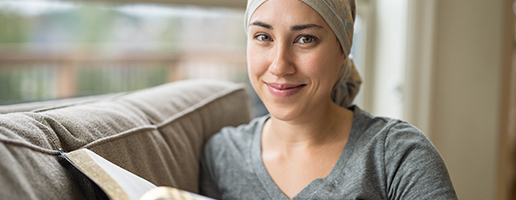Breast reconstruction - your options

Aside from the shock of a breast cancer diagnosis - and the thoughts that keep running through your head, “Has it spread?”, “Do I need chemo?”, “How will I cope?” - one of every woman’s biggest concerns is the possibility of losing your breasts.
Listen to our Oncology Podcast episodes for more information on Cancers that Affect Women.
The loss of the very essence of your femininity can be a huge emotional and physical blow. However, medical science today advanced in strides when it comes to reconstruction options, and a chat to your Plastic and Reconstructive Surgeon before starting cancer treatment, will go a long way in alleviating many of your fears.
The first person you will see after your breast cancer has been diagnosed is your Breast Surgeon who will explain exactly what you are dealing with and what your surgical options are. You will then be referred to a Plastic and Reconstructive Surgeon before starting any treatment to discuss the breast reconstruction options best suited to you.
What are your options?
Immediate breast reconstruction at the time of your tumor removal is currently the standard of care, says Dr Alexandra Grubnik, a Plastic and Reconstructive Surgeon with a special interest in reconstructive and aesthetic breast surgery, body contouring and cosmetic surgery. “Apart from the obvious psychological benefits, there are also technical advantages of preserving the skin envelope of your breast - and possibly the nipple and areola too – all of which will produce a superior aesthetic result. Various options are available and the choice of your procedure will be tailored to the type, location and biology of your cancer as well as your specific preferences and desires,” adds Dr Grubnik.
The most common reconstructive options available today include:
- Reconstruction following Lumpectomy
A lumpectomy involves the removal of the tumor with a margin of surrounding healthy tissue and this procedure is always followed by radiation to prevent recurrence.
- Local Parenchymal flaps
This procedure entails repositioning your breast tissue (parenchyma) to fill the post-lumpectomy defect. It’s a suitable option if you have moderate sized breasts and small tumors located in the upper outer quadrant. Your other breast will not be included in the surgery. Drawbacks here include scarring, a size discrepancy and possible breast distortion following radiation.
- Therapeutic Mammaplasty
This entails reshaping your breast tissue to fill the lumpectomy defect and doing a lift and/or reduction at the same time. Your other breast will be simultaneously included to ensure symmetry. It’s a very versatile technique that allows reconstruction of tumors in any location and will also help relieve the discomfort of having large breasts. The scars and appearance of your breasts will be the same as after having a breast reduction or lift.
Reconstruction following Mastectomy
Undergoing a mastectomy entails the removal of breast tissue, and in recent times skin sparing and nipple sparing mastectomies combined with immediate reconstruction have become increasingly popular. There are a number of different options here, that your surgeon will discuss with you in detail:
- Implant reconstruction
If you have small to medium sized breasts that are not droopy, and you don’t require radiation therapy, this may be a good option for you. It involves filling the breast skin envelope with implants which are placed underneath your pectoral muscles (the muscles that connect the front of your chest with the bones of your shoulders and upper arms). You’ll be able to choose the size and shape of your new breasts and they’ll retain their shape very well. There are, however, disadvantages including leaking or rupturing or your reconstructed breasts becoming hard, distorted and/or painful.
Reconstruction with your own tissue:
- Goldilocks procedure
This entails using the skin flaps of your breasts to re-create a new breast mound after a skin-sparing mastectomy, and, more recently, after a nipple-sparing mastectomy too. It’s the perfect choice for any size breasts but if you have small or moderate sized breasts additional tissue may need to be used to add volume.
- Latissimus Dorsi flap
This muscle flap has been considered a “workhorse” flap for breast and chest wall reconstruction for over a century. It incorporates using the latissimus dorsi muscle – the largest muscle in your back - also known as your ‘lat’ - with or without overlying skin. The biggest disadvantage here is the sacrifice of a muscle that moves your shoulder, so for about six months after the procedure you may experience a degree of weakness in your arm. However, as the remaining muscle groups get stronger they will gradually take over the function of the lat muscle and you’ll become increasingly mobile.
“Remember that every patient is unique, and the surgical and reconstructive options that were offered to your family member or friend may not be suitable for you,” says Dr Grubnik. “That’s why it’s important to spend time with your reconstructive surgeon and discuss in detail the various available choices – plus their pros and cons- and to always take along a list of any questions that may be bothering you.”
The Discovery Health Medical Scheme is an independent non-profit entity governed by the Medical Schemes Act, and regulated by the Council for Medical Schemes. It is administered by a separate company, Discovery Health (Pty) Ltd, an authorised financial services provider.
Related articles

5 important questions for your Reconstructive Surgeon
It's of paramount importance to discuss the surgical and reconstructive options with your surgeon. Remember that it is the surgeon’s duty to provide you with all the relevant information which will enable you to make an informed decision.

If you’re about to undergo chemotherapy (chemo), one of the best things you can do is to manage your fears and give yourself some sense of control by understanding what having chemo involves so you know what lies ahead on your cancer journey.

Playing your part during treatment
Everyone's cancer journey is unique so your multidisciplinary team will work together to come up with a treatment plan determined by your needs. You can help by listening to their advice and by following their instructions implicitly.